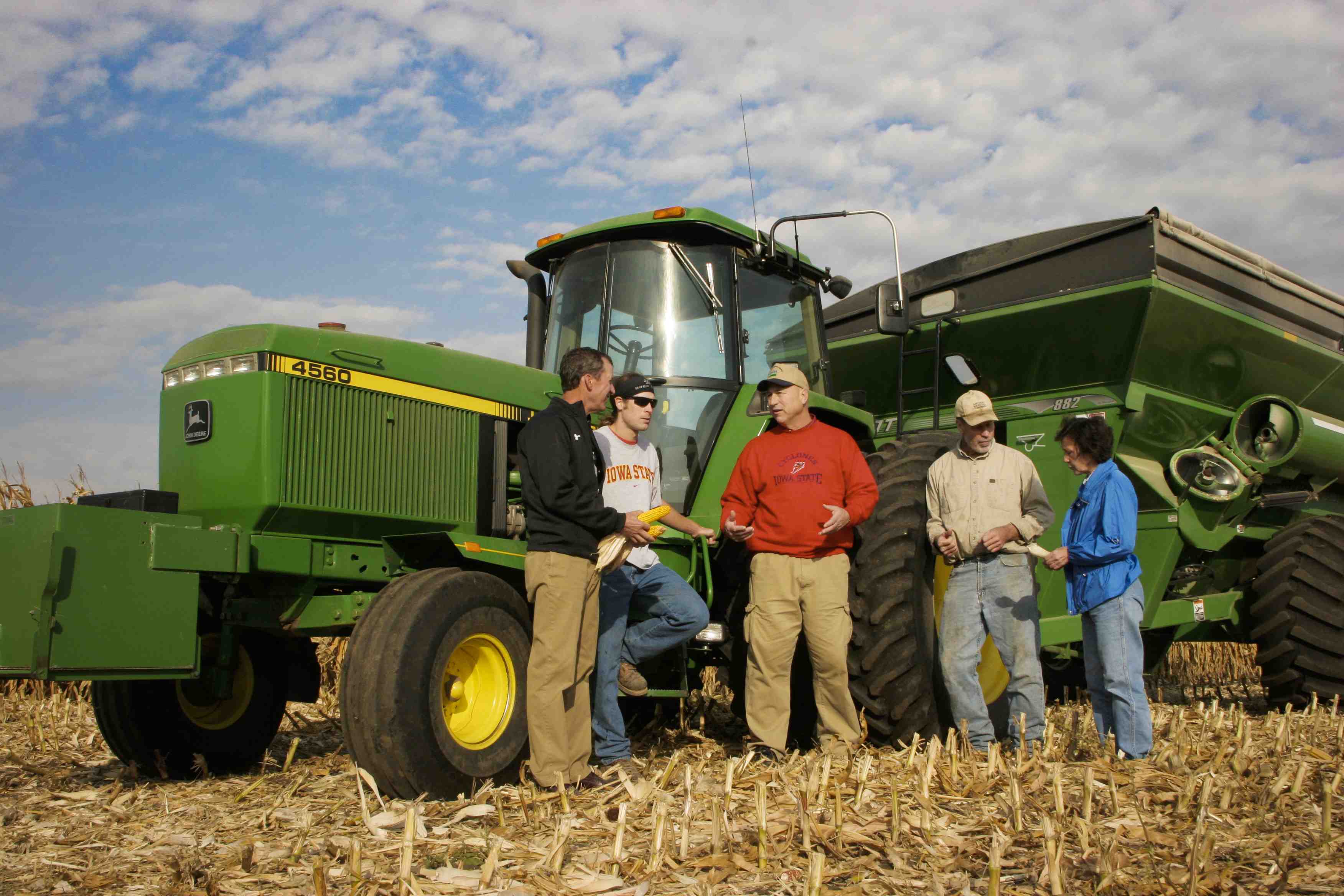
Dealing With Drought: ISU Extension And Farm Services Agency’s Rapid Response
Jim Larson, a northern Iowa beef cattle breeder, called Beth Doran in mid July with an urgent message. Larson (’69 animal science) looked to Doran, an Iowa State
University Extension and Outreach beef specialist, for answers to cattle producers’ drought-specific questions. Weeks of triple digit temperatures and little, if any, rainfall had contributed to the significant decline in crop and pasture conditions—and herds needed feed. What were their options?
His calls followed conversations Doran and her colleagues were having with county office and campus staff and put into motion a regional extension response that included 10 emergency meetings reaching over 660 producers and agribusiness staff.
“I was concerned about nitrates in my silage, so were my clients,” says Larson. “Beth sent me information about getting silage tested and many of my clients went to the meetings where extension tested for the presence of nitrates.”
Similar scenarios were happening across the state. The extension network ramped up communications, updated resources, contacted partners and began providing educational events and distributing materials.
Drought-stricken Iowa producers needed to make decisions quickly, but university research and expertise alone could not answer all their questions. Within a few days, Extension and Outreach joined with crop insurance agents and adjusters, agribusinesses and Farm Services Agency (FSA) directors across the state to hold meetings addressing drought issues.
“In July, we didn’t have disaster assistance to talk about, but we attended the extension-led meetings and encouraged producers to keep good records in the event assistance became available,” says Jeff Davis, Plymouth County FSA director.
FSA and ISU Extension and Outreach response continued around the state. Carol Groen, Lyon County FSA director, attended an Extension and Outreach webinar in Sheldon in late July, responding to question and providing agency fact sheets.
Trevor Kerr, Sioux County FSA director, invited Doran and staff from the Natural Resource Conservation Service and Rural Development to a late-July county emergency board meeting to document losses in crops, pasture and hay. He completed, filed and updated U.S. Department of Agriculture reports needed to trigger USDA response to the drought. Similar county emergency board meetings were held around the state.
By the end of July, Iowa FSA authorized emergency grazing on Conservation Reserve Program acres in 26 counties, freeing up forage and feed for producers.
Haying and grazing of cover crops without impact to insurability of planted 2013 spring crops was announced by Risk Management Agency in August.
USDA designated all Iowa counties as primary or contiguous natural disaster areas due to damages and losses caused by the drought by August 15, making emergency loans available to producers.
Looking back, Doran sees partnerships worked for the benefit of producers, especially with FSA.
“The agency with the capacity to offer emergency relief and the university with agricultural experts will continue to anticipate needs and respond to continuing drought conditions,” she says.



